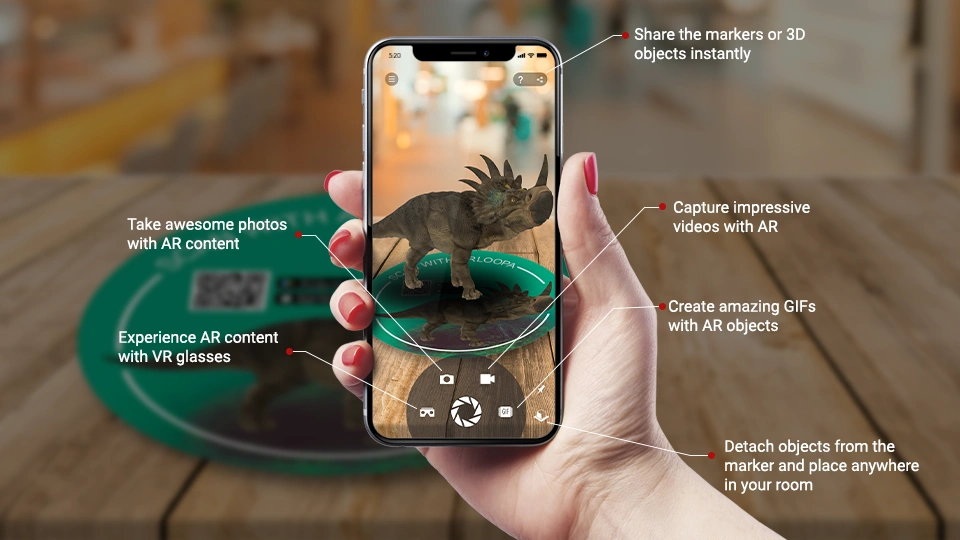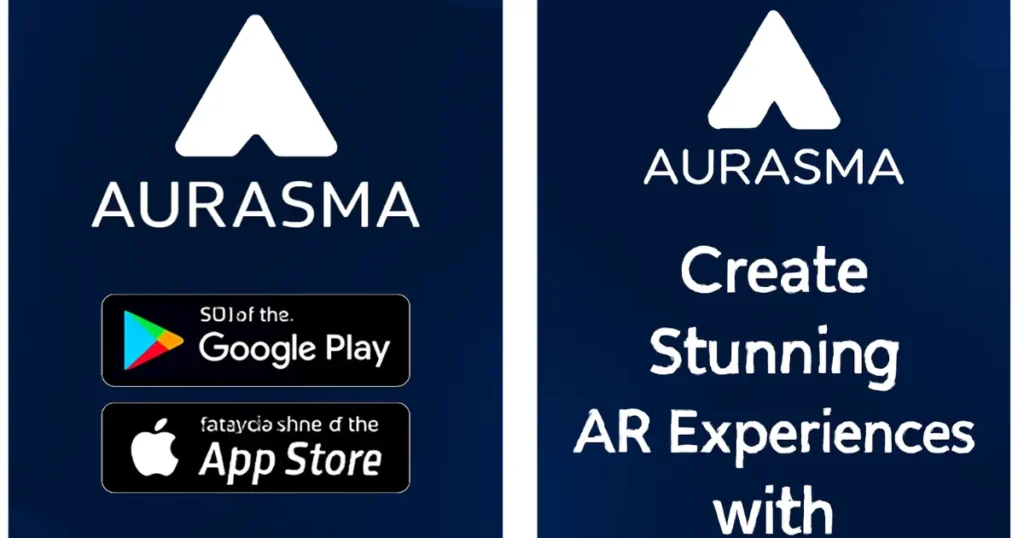
When we think about the future, one thing that often comes to mind is augmented reality. You’ve probably seen the buzz about AR in various tech circles, but have you ever stopped to think about how it could revolutionize your everyday experiences? That’s where Aurasma comes into play. If you’ve never heard of it or if you’re curious to explore its legacy, you’re in the right place. Let’s dive into how Aurasma changed the AR game, what it did for industries across the world, and why it’s still a significant topic in the tech space today.
What is Aurasma?
Before we get into the nitty-gritty, let’s take a step back and discuss what Aurasma was all about. Aurasma, launched in 2011, was a revolutionary augmented reality platform that enabled users to create interactive experiences by overlaying digital content, such as videos, animations, and 3D models, onto real-world images. Sounds cool, right? That’s because it was.
The platform was compatible with both iOS and Android devices, utilizing image recognition and computer vision to bring digital content to life. The platform was initially designed for users to create their own AR experiences, making it accessible for anyone, whether you were a marketer, educator, or hobbyist.
But here’s the kicker: In 2015, Aurasma was rebranded as HP Reveal after Hewlett-Packard acquired it. Although it was discontinued in 2020, its legacy still holds weight in the AR landscape.
Updated Information About Aurasma
| Version | 6.0.0 |
| Updated On | June 13, 2018 |
| Requires Android | Android 4.1 (Jelly Bean) and up |
| Downloads | ~58,942–59,018 downloads |
| Content Rating | +3 (or suitable for ages 3+) |
| Released On | June 13, 2018 (for this version) |
| Offered By | Aurasma / HP Reveal |
| Family Library | (No reliable data found) |
Historical Timeline of Aurasma / HP Reveal
2011: The Beginning
- May 2011 — Aurasma Lite for iOS was launched, introducing the world to mobile AR through image recognition.
- June 2011 — The Android version followed, quickly gaining attention in tech media and marketing industries.
2011: HP Acquisition
- October 2011 — Hewlett-Packard acquired Autonomy, the developer of Aurasma. From then on, the app was gradually integrated into HP’s offerings and became known as HP Reveal.
2012: Early Success
- By June 2012, Aurasma had already reached 4 million downloads and partnered with thousands of brands, publishers, and educators worldwide.
2013–2016: Expansion
- The platform became popular across multiple industries:
- Retail & Publishing: Magazines, movie posters, and advertisements used AR campaigns powered by Aurasma.
- Education: Teachers adopted Aurasma Studio to create “auras” (interactive AR experiences) for classrooms.
- Marketing: Brands utilized AR storytelling to enhance engagement and drive sales.
2017–2018: Transition and Updates
- The app continued under the HP Reveal brand.
- The last major update (Version 6.0.0) was released on June 13, 2018, for Android devices.
2020: Discontinuation
- In January and February 2020, HP Reveal was quietly removed from app stores, and users were notified that the service would no longer be supported.
- Educational and marketing campaigns built on the platform ceased to function, marking the end of an era for one of the earliest pioneers of AR.
Key Milestones and Achievements
- One of the first mainstream AR apps for mobile phones.
- Enabled non-technical users to create AR experiences via Aurasma Studio.
- Partnered with global brands, schools, and publishers to make print and physical objects interactive.
- Reached millions of downloads and widespread adoption during its peak.
Legacy of Aurasma
Although Aurasma / HP Reveal no longer exist, they paved the way for today’s AR platforms, such as Snap AR, Adobe Aero, and ARKit/ARCore. Its early adoption in education and marketing proved that AR could go beyond gaming and become a practical tool for learning, engagement, and storytelling.
Although the app has been discontinued, Aurasma’s influence endures in modern AR applications that continue to build upon its foundation.
Aurasma’s Core Features: What Made It Special?

Aurasma wasn’t just another AR app. It offered several unique features that set it apart from its competitors:
1. Easy-to-Use Content Creation Tool
Creating AR experiences has never been easier than with Aurasma’s Aurasma Studio. This web-based platform enabled users to create AR triggers and link them to digital overlays without needing any coding knowledge.
For example, you could take a picture of a product and link it to a video demonstrating how it works. That’s simple!
2. SDK for Developers
Developers could go the extra mile by integrating Aurasma’s technology into their own apps using the Aurasma SDK. This allowed businesses to build AR experiences directly into their mobile apps, offering immersive ways to engage customers. Whether it was for marketing, education, or entertainment, Aurasma made it easy to use AR in business applications.
3. Cloud-Based Analytics
One of the biggest features Aurasma offered was its cloud-based analytics. After creating an AR experience, businesses could track how users interacted with their content and see engagement data. This data proved invaluable for marketing campaigns, as it gave businesses direct insight into customer behavior and preferences.
4. White-Label Solutions
Aurasma allowed businesses to adopt a white-label solution, which meant they could brand the AR technology with their own logo and offer customized AR experiences to their customers. For example, museums could use the platform to overlay historical facts or interactive features onto exhibits. It was the perfect way to personalize content and boost engagement.
Why Did Aurasma Matter?

Now that you know about the key features, you’re probably wondering, Why did Aurasma matter so much in the world of AR? Let’s break that down.
1. Paving the Way for Future AR Platforms
Aurasma was one of the first AR platforms to reach mass adoption. While augmented reality was in its infancy, Aurasma provided an accessible platform for anyone to try their hand at creating AR experiences. It demonstrated the potential of AR technology to engage users in an interactive, immersive way.
Platforms like Snapchat and Instagram would later follow Aurasma’s lead, implementing AR features in their apps to allow users to engage with digital overlays in a fun, personal way. Aurasma helped set the stage for these later advancements.
2. Enhancing Learning and Education
Aurasma’s AR in education was revolutionary. Teachers could bring textbooks to life by linking them to videos, quizzes, or images. Imagine reading about a historical figure and then watching a video of their story unfold right before your eyes. That’s exactly what Aurasma enabled. It made learning interactive, engaging, and fun for students of all ages.
3. Marketing and Advertising Innovation
For marketers, Aurasma was a game-changer. It allowed brands to create unique, interactive ad campaigns that got customers involved in a way that static ads never could. Instead of simply viewing an advertisement, customers could engage with a product in real-time. Imagine scanning a magazine ad that not only shows a product demo but also gives you a discount code. How effective would that be?
4. Making Real-World Interaction Digital
Aurasma enhanced real-world interaction by digitizing the physical environment. Whether it was retail, real estate, or tourism, businesses could utilize Aurasma to offer customers richer, more detailed experiences that bridged the gap between physical and digital spaces.
Looking for a New AR Platform? Here’s What You Can Try
Although Aurasma is no longer available, numerous AR platforms still allow you to create stunning experiences. One such platform is Halo AR, which offers a similar set of features and functionality to Aurasma, but with a more modern and user-friendly interface. If you want to dive into AR content creation, Halo AR is a solid alternative to explore.
Another option is Zappar, which offers a suite of tools for both developers and marketers to build interactive AR experiences. It’s a great choice if you’re looking to enhance your business’s digital presence.
How Can You Use AR to Engage Your Audience?
If you’re intrigued by the idea of using AR but don’t know where to start, here’s a simple step-by-step guide to help you get started:
Step 1: Define Your Goal
Before jumping into AR, ask yourself: What do you want to achieve with it? Are you looking to enhance customer engagement, boost sales, or create interactive educational content? Once you’ve defined your goal, it will be easier to determine which platform and features are best suited for you.
Step 2: Choose Your Platform
Next, choose the platform that best fits your needs. If you’re looking for something user-friendly, try Halo AR or Zappar. Both platforms offer easy-to-use tools that don’t require extensive technical knowledge.
Step 3: Create Your AR Experience
Using the chosen platform, start building your AR experience. Choose the content you want to overlay onto your trigger image, whether it’s a video, animation, or link. Experiment with different triggers and make sure your content is engaging and relevant to your audience.
Step 4: Test and Iterate
Once your experience is live, make sure to test it thoroughly. Are the triggers working correctly? Is the content engaging? Get feedback from users and iterate to make improvements. Don’t be afraid to change things if something isn’t working.
Step 5: Promote and Analyze
Finally, promote your AR experience on your website, social media, or in-store displays. Be sure to track the results with analytics to measure engagement and effectiveness. Over time, you can refine your AR strategies for better results.
Download Guide
Looking for the right Augmented Reality app? Visit our Download Page to explore the best AR apps, including the latest alternatives to Aurasma.
Conclusion
Aurasma’s story reflects both the excitement and challenges of emerging technologies. From its 2011 launch as a revolutionary AR tool to its 2020 shutdown, Aurasma introduced millions to the potential of augmented reality. Although it no longer exists, its vision has helped shape the future of how we interact with both the digital and physical worlds.


